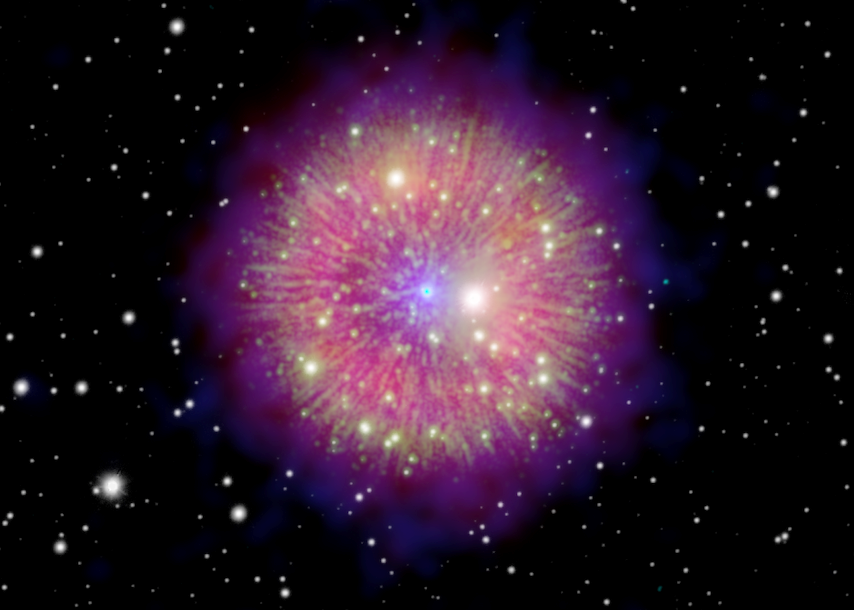
CTV Winnipeg: New image of 800 year old explosion
They say an image is worth a thousand words – but how about almost a thousand years? A new contender has been discovered for a rare supernova going back to the year 1181. University of Manitoba scientists, along with their project partners, believe that Pa 30, a nearly circular nebula with a central star in the constellation Cassiopeia, is the same object that appeared in our ancestors’ night sky more than 800 years ago. So, they created an image that captures this rare perspective.
“I realized this is an exceptional object, for many reasons,” explains Gilles Ferrand, Adjunct Professor at UM. “And so I felt like it deserves a special kind of image – on par with the other historical Galactic supernova remnants.”
This composite image uses data across the electromagnetic spectrum and shows a new spectacular view of the supernova remnant.
“Dr. Ferrand has exquisitely highlighted in his composite image a radiating structure that is exceptionally unusual in a supernova remnant,” says Jayanne English, Senior Scholar at UM. “This structure was a challenge to recognizing that the historic ‘guest’ star is associated with SNR 1181, rather than with any of the other possible nebulae in the vicinity.”
Combining images from several telescopes, X-ray observations by ESA’s XMM-Newton (blue) show the full extent of the nebula and NASA’s Chandra X-ray Observatory (cyan) pinpoints its central source. The nebula is barely visible in optical light but shines bright in infrared light, collected by NASA’s Wide-field Infrared Space Explorer (red and pink). Interestingly, the radial structure in the image consists of heated sulphur that glows in visible light, observed with the ground-based Hiltner 2.4 m telescope at the MDM Observatory (green) in Arizona, USA, as do the stars in the background by Pan-STARRS (white) in Hawaii, USA.
“The image has been designed to be suitable for public outreach,” says Ferrand. “Although it is my hope that professional researchers too find it illuminating.”
Studies of the composition of the different parts of the remnant have led scientists to believe that it was formed in a thermonuclear explosion, and more precisely a special kind of supernova called a sub-luminous Type Iax event. During this event two white dwarf stars merged, and typically no remnant is expected for this kind of explosion. But incomplete explosions can leave a kind of ‘zombie’ star, such as the massive white dwarf star in this system.
“The combination of the zombie star and of the nebula makes SNR 1181 a unique testbed for the physics associated with the causes and aftermaths of explosions.” Says Ferrand.
This very hot star, one of the hottest stars in the Milky Way (about 200 000 degrees Celsius), has a fast stellar wind with speeds up to 16 000 km/s.
Gilles Ferrand spoke with CTV News Winnipeg about the discovery and you can find it here: New image of 800 year old explosion






